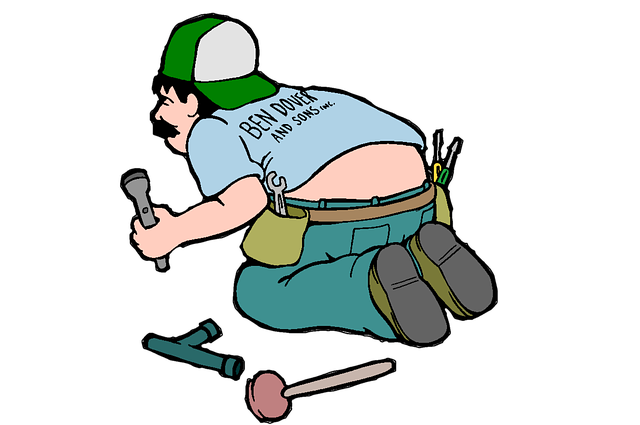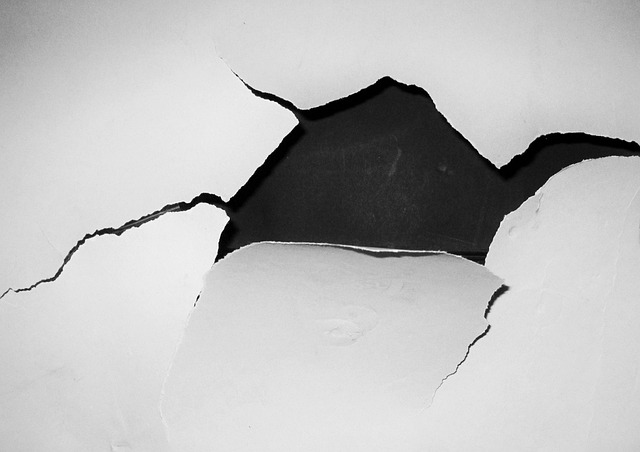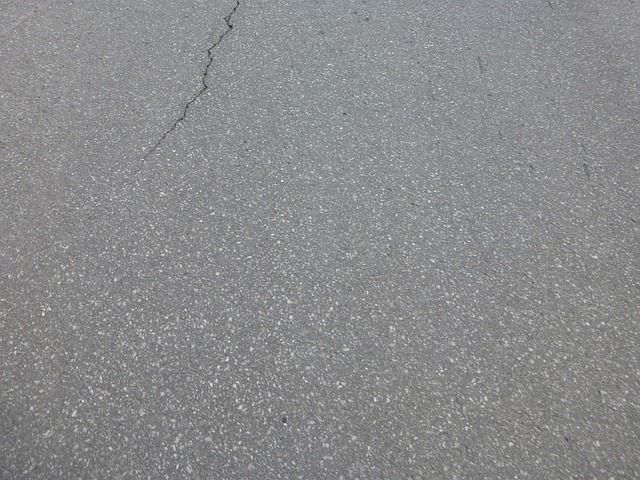Concrete foundation cracks require immediate attention for effective repair. Identifying crack types (vertical, horizontal, diagonal, corner) is crucial as each signals distinct problems like differential settling or improper construction. Early detection through regular visual inspections is vital for preventing escalation and saving costs. DIY methods for minor cracks include epoxy injection or sealant, while larger structural issues demand professional intervention with advanced technologies like carbon fiber wrapping or self-healing concrete. Consulting professionals is essential for severe or progressive cracks indicating settlement or heave. Regular maintenance, including crack repair, ensures the longevity of concrete foundations through cost-effective solutions and enhanced structural integrity.
Concrete foundation cracks can be both aesthetically and structurally concerning. This comprehensive guide delves into the intricacies of concrete crack repair, offering a detailed roadmap for understanding and addressing this common issue. From identifying early signs of distress to distinguishing non-structural versus structural cracks and exploring modern repair technologies, we provide a thorough overview.
Learn about various crack repair methods, the pros and cons of DIY solutions, and when to enlist professional help. Discover successful case studies and gain valuable insights for long-term maintenance, ensuring your concrete foundation’s longevity. Crack repair is more than just patching; it’s a strategic approach to safeguarding your property’s investment.
Understanding Concrete Foundation Cracks: Common Causes and Types

Concrete foundation cracks can range from small, hairline fractures to large, dramatic breaks, each with its own potential cause and impact on the structure’s integrity. Understanding these cracks is the first step in effective concrete foundation repair. Common causes include settlement or shifting of the soil beneath the foundation, structural defects, improper construction, and exposure to extreme temperatures or moisture fluctuations.
Cracks can be classified into several types: vertical, horizontal, diagonal, and corner cracks. Vertical cracks typically indicate differential settling, while horizontal cracks suggest heave or settlement issues often related to soil conditions. Diagonal cracks may point to structural problems or stress buildup, whereas corner cracks usually result from improper concrete placement or rebar spacing during construction. Identifying the specific type of crack is crucial for selecting the appropriate crack repair method.
Early Detection: Identifying Crack Repair Needs

Early detection is key in concrete foundation repair, especially when it comes to crack repair. Regular visual inspections can reveal even the smallest cracks, which are often signs of more significant structural issues beneath the surface. Homeowners and property managers should be vigilant in examining their concrete foundations for any visible cracks, no matter how minor they may seem. These cracks can indicate problems like settlement, heave, or shifts in soil conditions, all of which require prompt attention to prevent further damage.
By identifying crack repair needs early on, professionals can address the issues before they escalate. This proactive approach not only saves time and money but also ensures the long-term stability and integrity of the concrete foundation. It’s crucial to understand that even seemingly insignificant cracks can compromise the structural support of a building over time, making timely intervention essential for maintaining the overall health of the structure.
Non-Structural vs. Structural Cracks: Distinguishing the Difference

Concrete foundations, while sturdy, are not immune to damage over time, leading to cracks. It’s crucial to understand the distinction between non-structural and structural cracks for effective crack repair. Non-structural cracks, often hairline or diagonal, result from normal concrete shrinkage and movement, aged materials, or minor settlement issues. These cracks don’t compromise the overall integrity of the foundation and are primarily cosmetic. On the other hand, structural cracks signal more serious problems like differential settling, shifting soil, or unseen damage. They typically appear as vertical or broad horizontal cracks, indicating potential instability in the foundation. Distinguishing between these types is vital for appropriate crack repair, ensuring the longevity and safety of the concrete foundation.
When addressing cracks, homeowners should first assess their severity. Non-structural cracks can often be left alone, as they don’t require extensive repairs. However, structural cracks demand professional attention. Prompt action is key; ignoring them could lead to more severe damage and costly repairs. The goal of crack repair is not just aesthetics but also to prevent further deterioration, ensuring the foundation remains robust and stable for years to come.
Methods for Concrete Crack Repair: A Comprehensive Overview

Concrete crack repair is a vital aspect of maintaining structural integrity and aesthetic appeal in buildings and infrastructure. The methods employed can range from simple DIY solutions for minor cracks to complex structural repairs necessitating professional intervention. For small, non-structural cracks, epoxy injection or filling with hydraulic cement is common practice. These methods not only stop the crack from spreading but also provide a protective barrier against moisture and further damage.
For larger cracks that may indicate underlying structural issues, more comprehensive approaches are required. This could involve carbon fiber wrapping to reinforce the concrete, or for severe cases, full-scale replacement of the damaged section. Advanced technologies like self-healing concrete and polymer-based repairs offer innovative solutions, promoting longevity and reducing maintenance costs. In all crack repair scenarios, understanding the cause of the crack—whether it’s due to settling, erosion, or structural stress—is crucial for selecting the most effective and long-lasting solution.
DIY vs. Professional Crack Repair: When to Call an Expert

While some minor crack repairs on concrete foundations can be tackled as a DIY project, it’s essential to recognize when professional assistance is required. Small cracks, often less than 0.25 inches wide and not spreading, might be manageable for homeowners with basic tools and skills. Filling these cracks with appropriate epoxy or sealant can prevent further damage. However, any crack that exhibits signs of progression, widens over time, or is accompanied by noticeable foundation movement should prompt a re-evaluation.
Professional crack repair services are crucial when dealing with larger, structural cracks or multiple cracks that indicate underlying issues like settlement or heave. Experts have the tools and expertise to assess the severity of the damage, determine the cause, and implement effective solutions. They can also offer long-term protection through advanced sealing techniques and structural support, ensuring your concrete foundation remains stable and durable for years to come.
The Role of Technology in Modern Foundation Repair

In the realm of concrete foundation repair, technology has emerged as a powerful game changer, revolutionizing how professionals approach crack repair and overall structural integrity. Modern tools and techniques have enabled more precise and effective solutions, ensuring longer-lasting repairs. For instance, advanced sensors and monitoring systems can detect even the slightest movements or cracks, allowing for early intervention before they escalate into major issues. This proactive approach is particularly beneficial in regions with active geological formations or extreme weather conditions.
Additionally, innovative materials and methods have been introduced to enhance crack repair processes. Fiber-reinforced polymers, for example, offer a lightweight yet robust alternative to traditional concrete repairs. These cutting-edge materials can be easily applied and customized to fit various crack sizes, providing exceptional strength and flexibility. Furthermore, the integration of drones and robotic systems in inspection and repair operations has enhanced efficiency, accessibility, and safety, especially in hard-to-reach areas or complex structural configurations.
Long-Term Maintenance and Prevention Strategies for Concrete Foundations

Regular maintenance is key to ensuring your concrete foundation remains in optimal condition over time. One of the primary concerns is crack repair, as even the smallest fractures can signal underlying issues and lead to further damage if left unaddressed. Promptly repairing cracks with products designed for structural integrity not only prevents them from expanding but also preserves the overall stability of the foundation.
Prevention strategies should encompass a multi-faceted approach. This includes regular inspection to identify any signs of stress or movement, proper drainage solutions to mitigate water damage, and adequate protection against extreme temperatures. By implementing these measures, homeowners can significantly extend the lifespan of their concrete foundations, avoiding costly repairs in the long term.
Case Studies: Successful Crack Repair Projects and Lessons Learned

Crack repair is a critical aspect of concrete foundation maintenance, and successful projects offer valuable insights for homeowners and professionals alike. Case studies of crack repair initiatives highlight the diverse range of issues that can arise in concrete structures and the effective solutions employed to address them. These real-world examples demonstrate the importance of timely intervention and the use of appropriate materials and techniques for lasting repairs.
One notable case involves a residential property with extensive vertical cracks on the exterior walls, indicating structural instability. Through careful assessment, experts identified the causes as both settlement and freeze-thaw cycles. The solution involved a comprehensive approach: first, stabilizing the soil around the foundation to prevent further movement, then repairing the cracks using a high-quality epoxy injection method, which not only filled the gaps but also enhanced overall strength. This project successfully restored the structural integrity of the building, serving as a lesson in addressing crack repair holistically, considering both the symptoms and underlying causes.
